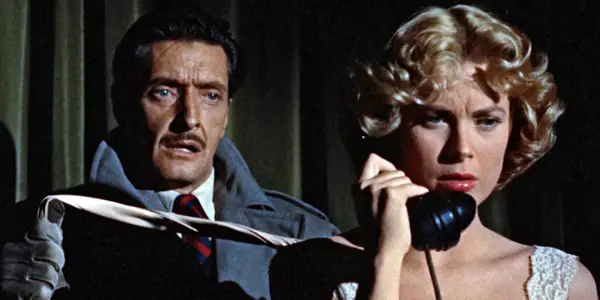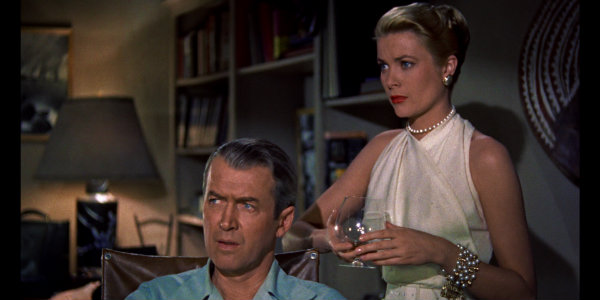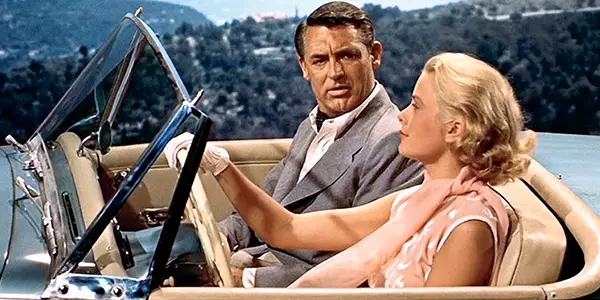Grace Kelly’s Films With Alfred Hitchc*ck

Alex has an unhealthy obsession with classic films.
It was 1962; Grace Kelly was no longer an actress. She was, at this point in her life, ruling the Principality of Monaco with her then husband Prince Rainier III. She had already had two children and another one on the way; the last thing on her mind was making another film. Until an old friend showed up.
Alfred Hitchc*ck approached Kelly in 1962 to discuss a script that would eventually become Marnie; the film would ultimately go on to star Tippi Hedren and Sean Connery, but that didn’t mean Hedren was his preferred choice. Hitchc*ck had high hopes that he could lure Kelly back to her first love. Unfortunately, due to the fact that she was running a small country, the people of Monaco didn’t particularly want their Princess playing a psychotic, sex-crazed criminal. Because of this, she was forced to turn the role down, much to the disappointment of both Kelly and Hitchc*ck.
But, alas. As movie fans we have the privilege of going back and viewing the three films that they collaborated on: Dial M For Murder, Rear Window and To Catch a Thief. These films inspired many people (like myself) to actually take film seriously and not just at face value. They have been ingrained into the fabric of American cinema. As film fans, we should take the time to appreciate the movies that Alfred Hitchc*ck and Grace Kelly have done, in the hopes that we can pass them on to future generations.
Dial M for Murder (1954)

Dial M For Murder was the first of the three films Hitchc*ck and Kelly did together; based on the play of the same name, the film stars Ray Milland, Grace Kelly and Robert Cummings. Milland plays an ex-tennis professional who finds out that his wife, played by Kelly, is having an affair with a pulp fiction writer played by Cummings. For obvious reasons this bothers him greatly, so in true Hitchc*ck fashion he plots to have her murdered.
Now, truth be told this is the one film that Kelly and Hitchc*ck did that I don’t remember fondly. Not because it wasn’t incredible, but it just lacked something memorable, especially compared to the other films on this retrospective. It certainly had elements that made it a typical Hitchc*ck motion picture: the blonde, the MacGuffin, and usually someone getting hurt or injured in some way, but it wasn’t as thrilling as say, Rope or even North By Northwest – those films keep me intrigued. Dial M for Murder, for me, seemed to be eluding to a murder the whole time, and when the moment more or less happens, I was slightly disappointed. The movie did gross around six million dollars, a rather small amount in modern times, and has positive reviews from most critics.
This was just the tip of the iceberg for Kelly and Hitchc*ck. This film was proof that something special was brewing between the two and based on the next movie, the results were definitely to be expected.
Rear Window (1954)

Rear Window is a mystery thriller that stars James Stewart, Grace Kelly, Thelma Ritter and Wendell Corey. Stewart plays a photographer named L.B. Jeffries who is wheelchair-bound after breaking his leg in a racetrack incident. But as a consolation, he has his attractive girlfriend, played by Kelly, popping in on occasion to see if her lover is all right. That still doesn’t deter Stella, played by Ritter, (his actual caretaker) from properly doing her job. Jeffries resides in Greenwich Village, so naturally he would have quite a few neighbors. During his recovery, he occupies his time by taking up voyeuristic tendencies on said neighbors. One day he notices that Mr. Thorwald’s (played by Raymond Burr) wife has suddenly disappeared; this leads him to believe she has likely been murdered.
This is the movie that got me into the never ending spiral that is film addiction. I remember it so vividly, and being absolutely enthralled the first time I viewed it. For me, it should be spoken in the same way that most film fans speak about Gone With the Wind or even Casablanca. Hitchc*ck was very consistent in his filmmaking. Although there may be films of his that I don’t enjoy as much as others, it still doesn’t detract from what he was trying to portray in his movies: to scare you.
Rear Window is probably one of the more recognizable Hitchc*ck films, partly because of Grace Kelly. In this role, she plays a socialite and one half of a May – December romance. Kelly encapsulates with her acting skills. She is particularly good in one scene where she gets confronted by the alleged murderer; you feel the sheer panic in that moment, and Kelly plays it off so well. You want to look away, but Hitchc*ck masterfully crafts the scene in a way where you just can’t.
Rear Window grossed well over its budget of one million and took in about thirty six million dollars – a huge amount compared to the low numbers of Dial M for Murder.
Unfortunately, this next film is the third and final film in the Hitchc*ck/Kelly trilogy. But don’t worry, it shouldn’t disappoint you, that is, unless you don’t like the country of France, then I suppose you wouldn’t enjoy it very much.
To Catch A Thief (1955)

Set in the French Riviera, To Catch a Thief is a stylistic romantic thriller once again starring Grace Kelly, but this time her leading man was Cary Grant (in his fourth Hitchc*ck film). Unlike most Hitchc*ck movies, the plot to this film is a little convoluted, so I’ll try to explain it without giving away major spoilers.
Cary Grant plays Joe Robbie, a former jewel thief who retired to the south of France to keep a low profile. His peace gets disrupted when he hears about a string of recent cat burglaries that authorities are now blaming on him. He plans to somehow prove his innocence by catching the real culprit in the act. Kelly plays Frances Stevens, the daughter of an insurance man that Robbie sought after for help. She’s pretty much there to throw a wrench into Robbie’s plans. At one point she accuses Robbie of stealing jewelry from her mother, which Robbie emphatically denies. Then, she basically ends up seducing him by the beachfront, which only complicates things further. With all these obstacles in front of him, Robbie finds it increasingly difficult to clear his name.
Ok, I admit. I do like this film, but not for the reasons you think. It’s not as vague as Dial M for Murder and certainly not as plot driven as Rear Window, but To Catch a Thief does have one thing: style. As I said before, this film is set in the French Riviera; as an audience member, you’re treated to breathtaking views of not only Grace Kelly’s future home but also some fairly amazing cinematography.
This is my favorite Grace Kelly role. She’s just so sly and cunning in this. Her character is actively trying to tempt Joe Robbie into admitting he has done these crimes, because she wants him to fail. It’s only later in the film that she recants. That still doesn’t make her acting less memorable, but it sure makes for one heck of a memorable film.
To Catch A Thief had a budget of two and a half million and grossed about eight million in total.
All Good Things Must Come To An End
Like all director/actor collaborations, Alfred Hitchc*ck and Grace Kelly‘s projects together inevitably came to an end. It’s unfortunate, really. I would have loved to have seen the two give it another go. It’s because of this that makes Kelly’s decision of turning down the role in Marnie such a difficult one to swallow. Think of the endless possibilities that could have opened up for them. Who knows, maybe ‘Hitch’ would’ve cast her in more of his films.
But I’m not complaining, as I’m very fortunate to have seen these films. And if you have the chance, I suggest taking a little time out of your day to enjoy such masterpieces.
What is your favorite director/actor duo? Let me know in the comments!
(top image: Rear Window – source: Paramount Pictures)
Does content like this matter to you?
Become a Member and support film journalism. Unlock access to all of Film Inquiry`s great articles. Join a community of like-minded readers who are passionate about cinema - get access to our private members Network, give back to independent filmmakers, and more.
Alex has an unhealthy obsession with classic films.













